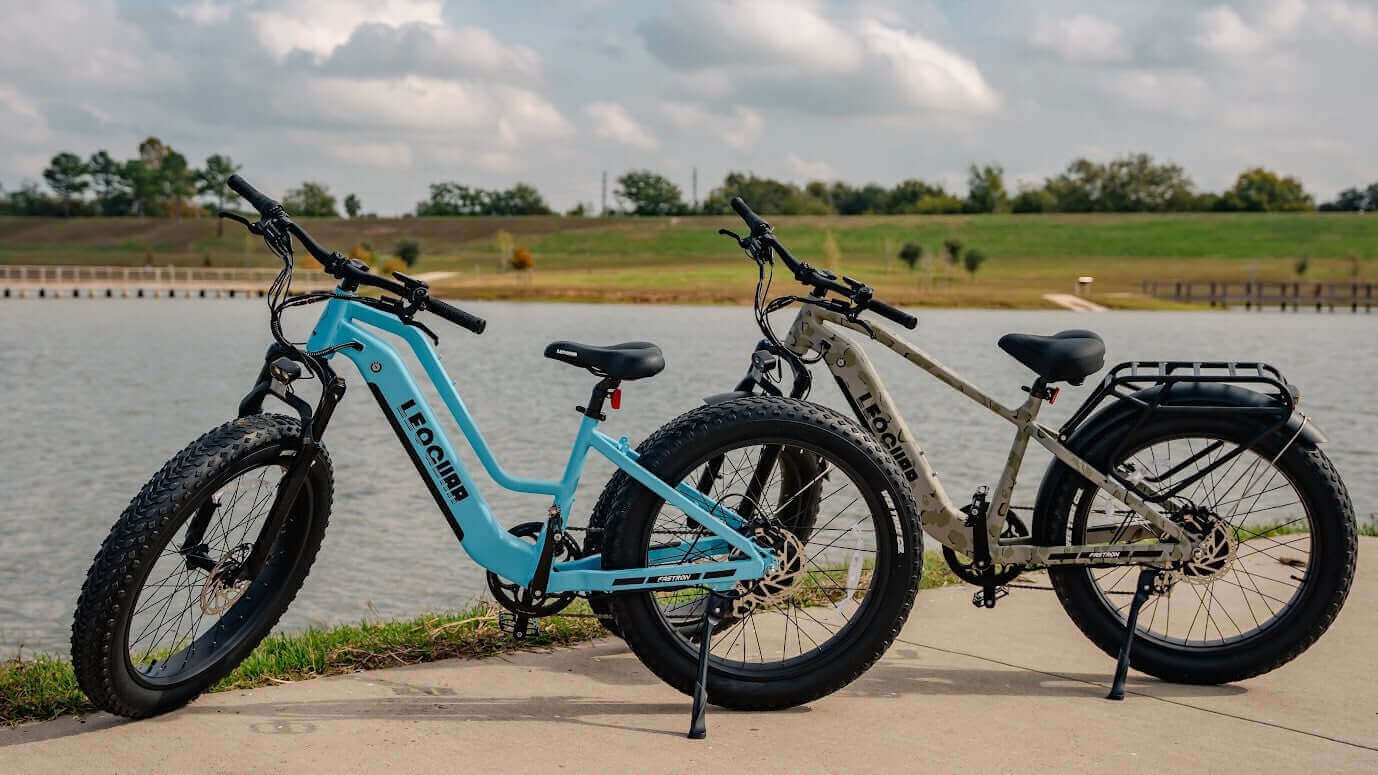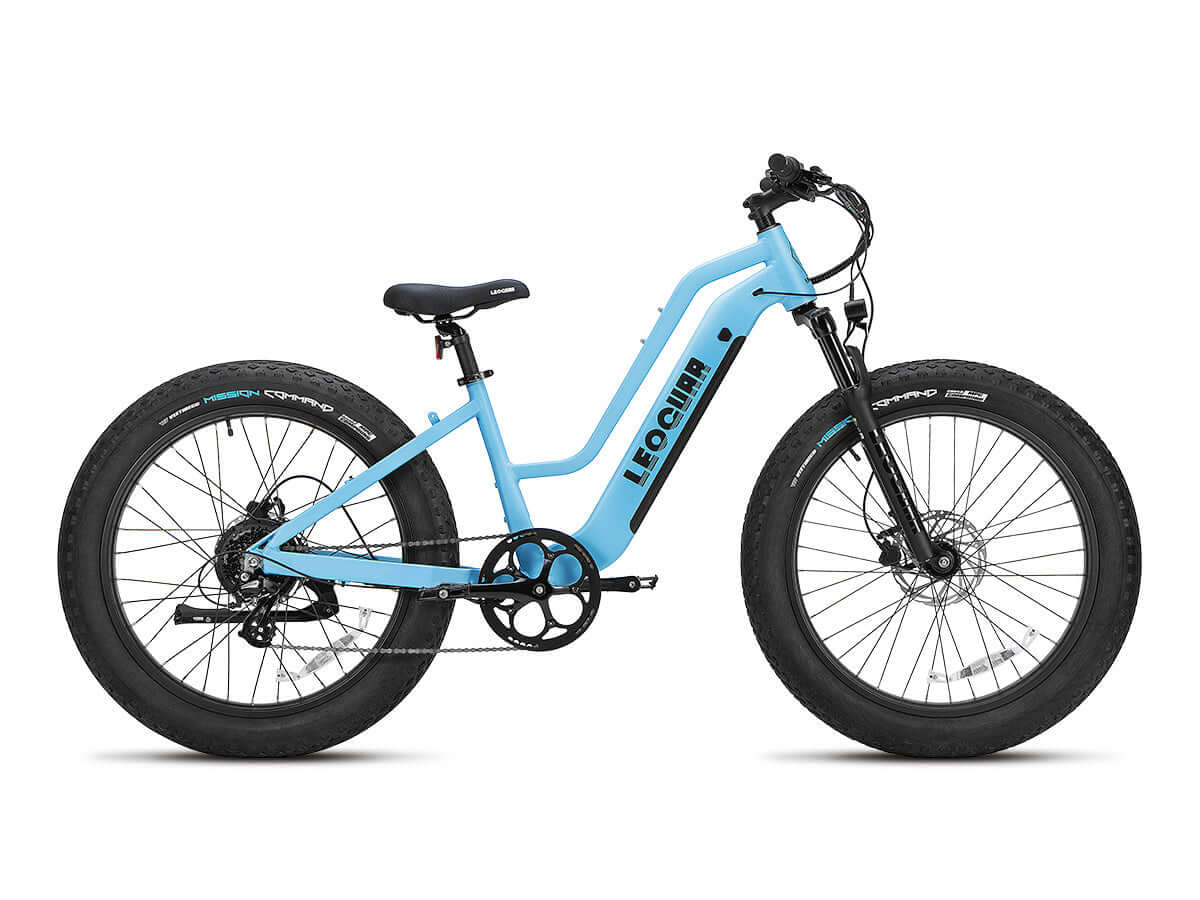
Best Road Ebike vs Off Road: Terrain Impact Guide
The Key Difference
Picking the right e-bike can feel hard. But the choice gets simple when you think about one main thing: where you'll ride. Your riding surface decides everything about a bike's design.
Road e-bikes are built for speed on pavement. Off-road e-bikes are tough machines made for control on rough ground. This guide will break down these differences to help you pick the right bike. We'll see how they work in real life and help you decide if one bike can handle all your rides.
The design idea of each type is totally different. A road e-bike focuses on being smooth through the air, light weight, and good power transfer. The goal is to help you ride faster and go farther on smooth roads. The electric help feels like a steady wind pushing you to keep high speeds.
Off-road e-bikes, often called electric mountain bikes, focus on staying stable and gripping the ground. They're built tough to handle drops, rocks, and roots. The motor gives power differently, with strong force to climb steep, loose hills from a stop.
| Feature | Road E-Bike | Off-Road E-Bike |
|---|---|---|
| Primary Goal | Speed & Efficiency | Control & Durability |
| Ideal Terrain | Paved Roads, Bike Paths | Dirt Trails, Gravel, Uneven Surfaces |
| Riding Position | Aggressive, Aerodynamic | Upright, Commanding |
| Key Characteristic | Lightweight & Nimble | Robust & Cushioned |
Looking at the Parts
To really understand how different these two e-bikes are, we need to look at their specific parts. These parts aren't picked randomly - each one is chosen to master a specific type of ground. Knowing why these differences exist helps you judge a bike beyond just its specs.
Frame Shape and Materials
The bike's frame shows its purpose right away. The best road e-bike models have a forward-leaning shape that cuts through air better. This position makes you smaller against the wind and lets you go faster. Frame materials are picked to save weight, with good aluminum and carbon fiber being most common. These frames are very stiff, so almost all power from your legs and the motor goes into moving forward. You'll see steep angles that make the bike quick and nimble on pavement.
An off-road e-bike's frame is built for different challenges. The shape is more relaxed and upright. This puts you in a better position to see and control the bike on tough trails. The focus moves from cutting through air to being strong. Frames are often built with reinforced aluminum or special carbon fiber made to absorb hits rather than just resist bending. The key sign is a more relaxed front angle that pushes the front wheel out farther for better stability when going down steep, rough ground.

Tires Connect You to the Ground
No part affects an e-bike's performance more than its tires. Road e-bikes have narrow tires, usually 28c to 32c wide. These tires use high pressure and have smooth treads. This design focuses on one thing: making it easy to roll. The small contact area and smooth surface let the bike glide over pavement with little effort, but give very little grip on loose or wet surfaces.
Off-road e-bikes are the opposite. They use wide tires, from 2.2 inches up to 2.8 inches or more. These tires have big knobs and use much lower pressure. The wide contact area and rough tread work like claws, digging into dirt, mud, and rock for grip when climbing and stopping. On pavement, these same features create resistance and make noise, making the bike feel slow.
Suspension Smooths the Ride
Suspension is one of the most obvious differences. Most road e-bikes have a completely rigid frame and fork. This design choice puts all power into speed and keeps weight low. Every bit of energy goes into going fast. Some models may have subtle flex areas to reduce road vibrations, but they don't handle big bumps.
For an off-road e-bike, suspension isn't a luxury - it's needed. It keeps the wheels on the ground over rough terrain, which is key for control and grip. There are two main types: hardtail bikes have suspension at the front and rigid rear, while full suspension bikes have both front suspension and a rear shock. The amount of travel - how far the wheel can move to absorb a hit - is important. For general trail e-MTBs, this travel is typically between 120mm and 160mm. For a road e-bike, it's 0mm.
Motor Power vs Force
Both bikes have motors, but how they deliver power fits their use. Road e-bike motors are often lighter and smaller. They're made for smooth power that works with your pedaling. The goal is to help maintain high speeds efficiently, extending range for long rides. The focus is on steady power output and battery life.
On an off-road e-bike, the key number is torque, measured in Newton-meters. Torque is the turning force that gets you moving, and it's what you need to power up steep, technical climbs over loose rocks from almost stopped. Motors are tuned for high torque, often in the 85-100Nm range. This raw power matters more than top speed when you're on challenging trails. It gives the strength needed to beat obstacles that would be impossible on a road e-bike.
Gears and Brakes
The gearing on each bike fits its intended speed range. A road e-bike uses gears that are close together. This lets you make small changes to keep perfect pedaling rhythm at high speeds on flat or rolling ground. The overall gear range is narrower.
Off-road e-bikes have wide-range gears, like a 10-51 tooth setup. The big 51-tooth gear is the "granny gear," a very low gear that lets you spin the pedals and let the motor's torque do the work of pulling you up very steep hills.
Both bike types now almost always use hydraulic disc brakes for their better power and control. But the off-road systems are stronger. They typically use larger brake discs and stronger calipers. This setup gives better heat control and more stopping power, which is critical for safety when controlling speed on long, steep downhills.
Performance in Real Life
Technical specs are one thing, but how these bikes feel in the real world is what really matters. We'll compare them in three common situations to show their strengths and weaknesses.
Situation 1: City Commute
On paved city streets, the road e-bike shines. It's fast, agile, and feels very efficient. The assist feels like a gentle, steady tailwind, helping you speed up quickly from a stoplight and keep that speed easily. Moving through traffic feels natural and nimble. In this setting, the off-road e-bike feels like a monster truck. It's slow to speed up, the knobby tires make noise on the road, and keeping speed needs more battery and leg power due to the resistance and non-aerodynamic riding position. The powerful torque can even feel jerky if not controlled carefully in stop-and-go city riding.
Situation 2: Gravel Paths
This is the gray area where the lines start to blur. On a hard-packed dirt path or fine gravel road, a road e-bike can manage, but it's far from ideal. The narrow, high-pressure tires feel harsh and unstable, sending every vibration straight to you. There's always fear of the front wheel slipping in a loose corner or sinking into soft spots. An off-road hardtail e-bike comes alive here. The suspension fork and wider, lower-pressure tires absorb the bumps, giving a ride that's not only more comfortable but also much more confident and controlled. It's worth noting that a new type of endurance road bikes with wider tire clearance and gravel-specific e-bikes are made for this middle ground, but a true off-road e-bike stays better once the surface becomes anything more than perfectly smooth.
Situation 3: Technical Dirt Trails
This is where the off-road e-bike belongs, and where a road e-bike should never go. On a proper singletrack trail with roots, rocks, and drops, the features of the e-MTB aren't just for comfort - they're needed for safety. The long-travel suspension absorbs big hits that would send a rigid bike flying. The powerful, large brakes give the control needed to manage speed on steep downhills. The grippy, wide tires are the only thing keeping you connected to the ground through loose turns. Taking a road e-bike on this terrain isn't just a recipe for a bad ride but is also very dangerous, likely to damage the bike and put you at high risk of injury.
The One-Bike Question
Many buyers dream of one e-bike that can do everything: commute to work during the week and explore trails on weekends. While this makes sense, this approach always involves trade-offs. The key is to understand those trade-offs and pick the bike that best fits your main activity.
The Off-Road Commuter
Can you use an off-road e-bike for road commuting? Yes. The pros are big: unmatched comfort thanks to suspension and large tires that erase potholes, a strong build that can handle city abuse, and a commanding, upright view of traffic. But the cons are real. The bike will be less efficient, meaning you'll use more battery for the same trip and wear out your expensive knobby tires very quickly on rough pavement.
For riders who spend 80% of their time on trails but need a bike for a 20% commute, this works. The best way to reduce the downsides is to buy a second set of wheels. Putting slicker commuter tires on a separate wheelset lets you swap them in minutes. This gives you the best of both worlds: a fast, efficient commuter for the work week and a capable, no-compromise trail machine for the weekend without buying two separate, expensive e-bikes. Models often sold as "SUV" or "rugged commuter" e-bikes, like the Rad Power Bikes Radster Trail or Aventon Aventure, are built on this idea, often coming with features like fenders and racks on a strong, trail-capable frame. They represent a factory-built compromise for riders who truly split their time between pavement and light trails. In the end, the best road e-bike is the one made for the road, but understanding these hybrid options helps you make the most informed choice for your unique riding life.
Frequently Asked Questions
Q: Can I use a road e-bike on gravel paths occasionally?
A: Yes, but it won't be comfortable or safe. Road e-bikes can handle smooth, hard-packed gravel for short distances, but the narrow tires and rigid frame make them unstable on loose surfaces. You'll feel every bump and risk losing control in corners.
Q: How much does the motor type affect battery life between road and off-road e-bikes?
A: Road e-bike motors are tuned for efficiency and can give you 40-80 miles per charge on pavement. Off-road e-bike motors focus on power and torque, typically giving 20-40 miles per charge depending on terrain difficulty and how much you use the motor.
Q: Is it worth buying two different e-bikes for different terrains?
A: If you regularly ride both pavement and trails, two bikes give the best performance. However, if you're on a budget or have limited storage, choose based on where you'll ride 80% of the time and accept the compromises for the other 20%.
Q: What's the weight difference between road and off-road e-bikes?
A: Road e-bikes typically weigh 35-50 pounds due to lighter frames and components. Off-road e-bikes usually weigh 45-65 pounds because of stronger frames, suspension, and more robust parts needed for trail riding.
Q: Can I upgrade a road e-bike with wider tires for better versatility?
A: Most road e-bikes have limited tire clearance and can only fit tires up to about 32-35mm wide. This small increase won't give you the grip and comfort needed for serious off-road riding, though it can help with light gravel paths and comfort on rough pavement.









































Leave a comment